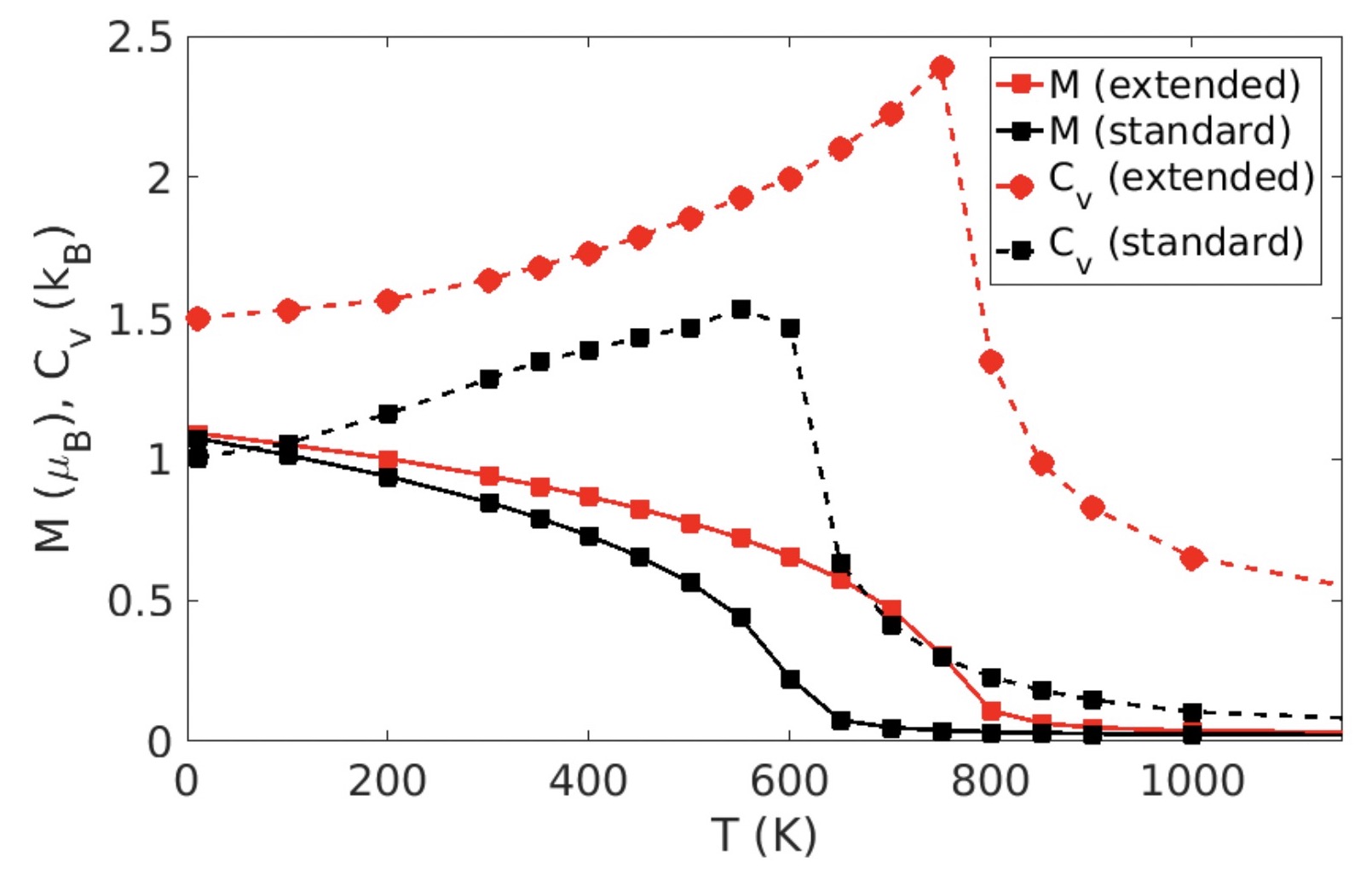An extended atomistic spin model allowing for studies of the finite-temperature magnetic properties of alloys is proposed. The model is obtained by extending the Heisenberg Hamiltonian via a parametrization from a first-principles basis, interpolating from both the low-temperature ferromagnetic and the high-temperature paramagnetic reference states. This allows us to treat magnetic systems with varying degree of itinerant character within the model. Satisfactory agreement with both previous theoretical studies and experiments are obtained in terms of Curie temperatures and paramagnetic properties. The proposed model is not restricted to elements but is also applied to binary alloys, such as the technologically important material permalloy, where significant differences in the finite magnetic properties of Fe and Ni magnetic moments are found. The proposed model strives to find the right compromise between accuracy and computational feasibility for accurate modeling, even for complex magnetic alloys and compounds.
Ref: Fan Pan, Jonathan Chico, Anna Delin, Anders Bergman and Lars Bergqvist, Physical Review B 95, 184432 (2017).
Fig: Temperature dependent magnetization (M) and specific heat (Cv) of the iron-nickel alloy Permalloy.





